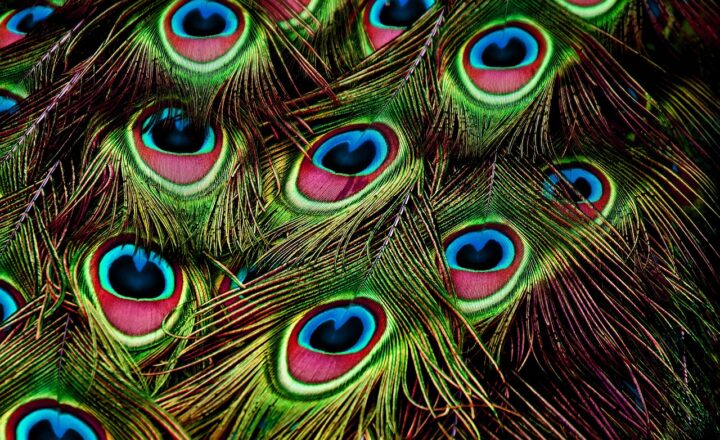The Amazing Science of Animal Camouflage and How It Inspired Human Innovation
November 16, 2024

Animal camouflage is a fascinating adaptation that has evolved in the natural world, allowing countless species to survive and thrive. From the uncanny resemblance of a stick insect to twigs and leaves, to the way a cuttlefish can change its color in an instant, camouflage serves as a brilliant example of nature’s ingenuity. This article explores the incredible science behind animal camouflage, its various forms in the animal kingdom, and how these natural wonders have inspired innovations in human technology.
1. Understanding Camouflage
Camouflage is defined as an adaptation where an organism’s coloration and pattern allow it to blend into its environment. This strategy can be crucial for both predators and prey. By blending into their surroundings, animals can deceive their enemies or ambush unsuspecting prey.
There are several main types of camouflage:
- Background Matching: This is when an animal has colors and patterns that match the environment. For example, the peppered moth shows dark coloration on tree bark, which makes it nearly invisible to predators.
- Disruptive Coloration: This involves patterns that break up the outline of an animal’s body. Zebras use stripes as disruptive coloration, confusing predators about their direction during a chase.
- Countershading: Many animals, like deer, are darker on their backs and lighter on their bellies. This shading creates a flat appearance and eliminates shadows, making them less visible.
- Masquerade: Some animals, such as certain mantis species, mimic objects in their environment. These animals can look like leaves, flowers, or even bird droppings, helping them avoid detection.
These forms of camouflage showcase the incredible adaptations in nature, enabling animals to outsmart both their prey and predators.
2. The Mechanisms Behind Camouflage
The science of camouflage involves complex biological mechanisms. Some species have evolved specialized skin patterns, color-changing capabilities, or built-in reflective properties.
Two fascinating examples include:
- Cuttlefish: These marine animals can change their skin color and texture to resemble rocks, sand, or even coral in just seconds. This rapid transformation is controlled by specialized pigment cells known as chromatophores. It allows cuttlefish not only to hide from predators but also to communicate with one another.
- Chameleons: While often associated with changing color, chameleons primarily use this ability for communication; however, their adaptive color change also provides camouflage. They can alter their color in response to environmental factors like temperature and mood, blending in with leaves or bark.
These adaptations serve crucial survival functions and inspire curiosity about how such mechanisms could be mimicked or enhanced in technology.
3. Nature’s Inspiration: Biomimicry
Biomimicry is a concept where innovations are inspired by nature’s designs and processes. The adaptability and efficiency of animal camouflage have influenced a range of human innovations across various fields, including military technology, architecture, and fashion.
For instance:
- Stealth Technology: The military has looked to animal camouflage for advancements in stealth technology, creating materials that can change color or pattern to blend with various environments. The US military has developed adaptive camouflage to help soldiers blend into their surroundings in real-time, much like a cuttlefish.
- Architectural Designs: Buildings inspired by nature often incorporate elements that allow them to blend with natural landscapes. Some structures utilize reflective materials and patterns that mimic natural elements, reducing their visible impact on the environment.
- Fashion and Wearable Technology: Designers have begun utilizing the principles of camouflage in fabrics that can change color based on the wearer’s environment, enhancing the aesthetic and functional value of clothing.
Biomimicry not only acknowledges nature’s brilliance but also leverages it to create sustainable and innovative solutions for modern challenges.
4. The Future of Camouflage Innovations
As technology continues to evolve, the concept of adaptive camouflage is likely to see further advancements. Some areas of research and development to watch include:
- Color-Changing Materials: Researchers are experimenting with materials that mimic the color-changing abilities of cephalopods. This could lead to fabrics that can adapt to different environments, revolutionizing fields from clothing design to military applications.
- Light-Responsive Materials: Scientists are working on materials that change their appearance in response to different lighting conditions. This could be used in smart clothing or architecture that adapts to enhance concealment or visual appeal.
- Smart Textiles: Development of textiles that not only adapt in color but also incorporate technology, such as heating elements or sensors. These could offer functionality beyond aesthetics, impacting sportswear and protective clothing.
The future holds immense potential for combining advanced technology with nature-inspired designs to create products that can “disappear” when required.
5. Conclusion
The science of animal camouflage offers a breathtaking glimpse into the sophistication of nature’s designs. By understanding the mechanisms behind camouflage, we can appreciate not just the beauty of these adaptations but also their potential applications in human innovation. From military stealth to architectural designs that harmonize with nature, the lessons we learn from the natural world can lead to sustainable solutions that address modern-day challenges. As we observe and learn from the incredible diversity in nature, the fusion of biology and technology will empower us to innovate in ways we have yet to imagine.
If you’re intrigued by the convergence of science and innovation, the story of animal camouflage is just the beginning. Explore how nature can inspire your next project, and consider the possibilities of adaptive designs in our ever-evolving landscape.








